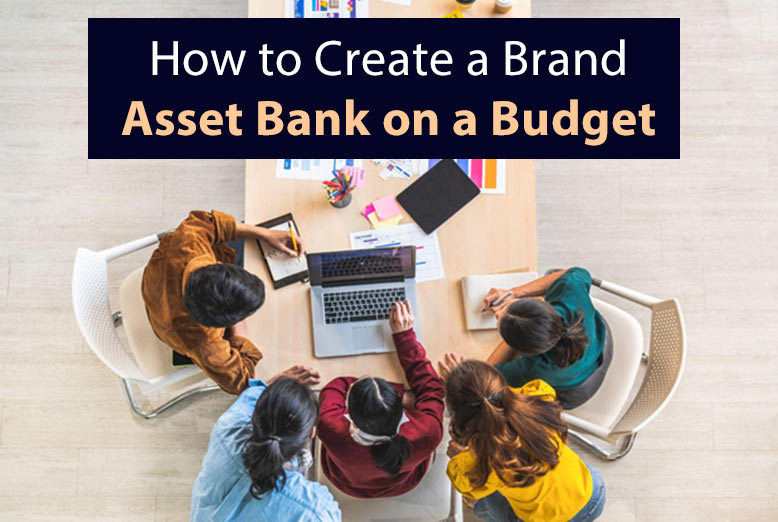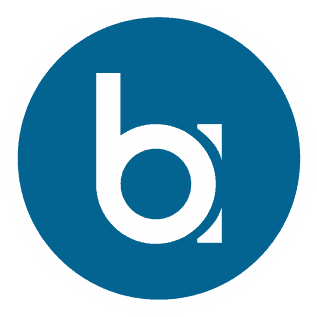We’ve all been there. Searching through old emails, messy folders, or half-forgotten drives, desperately trying to find the “right” version of a logo or a presentation template. Or worse, finding out too late that you used the wrong font in a client pitch, or that your social media team has used mismatched graphics when posting online. It’s the little things that can make your brand look less than polished.
That’s where a brand asset bank can help. The problem is, when you think about setting one up, it can seem like a major (read: expensive) undertaking, especially for smaller businesses, startups or freelancers that don’t have large design budgets.
The good news is, it doesn’t need to be! You don’t need enterprise-level software or a design and creative team to do it right. In fact, with some smart decision-making and some low-cost tools, you can set up an asset bank that will keep your brand consistent and save your team hours of wasted time, without costing the earth.
How to Create a Brand Asset Bank on a Budget
Having a cohesive brand identity is not always a resource-intensive task. AI generative fill tools are helping businesses now take on more design, repurpose images and build an asset-centric repository without the need for heavy design software or massive creative teams.
A brand asset bank is a central, well-organised library of brand-related assets, such as logos, templates, images and more. Using a repository for your brand assets will help you maintain brand consistency and accessibility without the chaos.
So let’s get into how to create a brand asset bank:
Start With What You Have & Make a List
Rarely would you have launched a business without a name, logo, or at least a rudimentary sense of style – so start by taking stock of what you already have. Make a basic spreadsheet of your assets, and make a note of whether each one is worth keeping or needs an upgrade.
Note down anything you don’t have too: do you have a colour scheme? Brand photos in action? Templates for pitches and social posts ready to use? Basic guidelines on how your brand should look and feel? It’s much easier to spot the gaps and plan your asset bank strategically when you get a clear picture of what you already have.
Modernise Your Storage With the Cloud
Unless you’re harboring government secrets, the cloud is the best place to store your digital assets for your marketing strategy. You can access them anywhere and share them with your team. On a budget, Google Drive, Dropbox, and OneDrive all offer juicy free trials. Google Drive offers the most with 15 GB of free storage, and if you don’t mind being a little cheeky, you can use a couple accounts you can have even more.
That said, you’ll also want to consider which integrates with the other programs your business uses. For example, if you write everything in Microsoft Office, OneDrive can connect to that for easy saving.
Name & Save Files Like a Pro
When you do set up your online asset bank, be sure to be descriptive with your file and folder names. That way you’ll be able to find everything easily via search when it grows. You’ll want to write guidelines on how you name and tag assets for consistency.
Use a top-down naming scheme, so the most important tag starts the file name and works down. For example, logo-colour-brandname-2025.svg. You’ll also want to be sure that you’re saving your files in lossless formats like .svg for graphics, that way you won’t get odd colours and glitchy artifacting after heavy usage (and compression).
Focus on the Big Stuff, Let the Details Follow
Your asset bank will grow as your brand needs it to, so start with what you’re using most and focus your efforts there to begin. Your logo is the face of your brand, so it helps to have a couple versions for each occasion. High-res, low-res, .svg, .jpg, black & white, colour, and different sizes too.
A square and a banner (3:1 or 4:1) are the most useful sizes; any others you can make as the need arises. And to save time, it’s a good idea for access and asset protection to keep a folder at the top of your asset bank for your most commonly used files.
Share Your Assets with your Team
Giving them permission to access the folders and files is the first step, but don’t forget to tell them what’s in there too. If they know there are photos they can use for social posts, or to promote different parts of your business, they’ll be able to use them. It’s also useful to have two asset banks. One smaller bank for external partners and freelancers, and another full bank for the team.
Remember Your Spring Cleaning
It’s work clearing out unused files and cleaning up mistakes in your asset bank. Set a reminder for twice a year to clean up and organise and add any new files too. Once you get into the habit of it, you’ll be pleased by the results a clean asset bank can have on your workflow.
Affordable Design Tools for Asset Creation
If you’ve used Canva before, it’s probably been for those snappy posters and quick social media graphics. There are, however, other tools worth checking out depending on your specific requirements and budget. Adobe Acrobat is a good alternative if you want to have professional-standard design made easy – it’s reasonably priced, intuitive to use, and integrates with the rest of the Adobe creative suite. In terms of team collaboration, Figma is another good option, particularly when there are a number of people who need to be working on the same design at the same time.
Free stock libraries such as Unsplash, Pexels and Pixabay are an obvious way to source visuals and build up your assets bank without incurring additional costs. If there are skills your team is missing, such as bespoke logo design or copywriting, platforms like Fiverr and Upwork will enable you to find freelance talent to plug those gaps at an affordable rate.
Keep Your Brand Consistent Without Overspending
Creating a brand asset bank is not complicated or expensive. It’s simply about doing more with what you have and working in a smarter way. By taking inventory of what you already have, organizing it in a way that your entire team can access and selecting low-cost design platforms, you can build a process that’s efficient, minimizes errors and enables your brand to shine at every touchpoint.
If you’re a bootstrapping founder, a lean startup, or a small business with big ambitions and few resources, the first step is to make sure everything is consistent. A well-curated asset bank will ensure your brand looks polished, dependable and primed for scale (without breaking the bank). Start with the basics, stay organised and remember, the most successful brands started with nothing but a great idea and a willingness to make the most of what they had.







